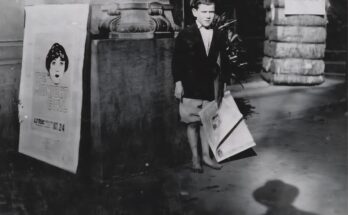Ursula Heilbut was born in Hamburg, Germany, into a Jewish family during a time of growing unrest and rising antisemitism. As the Nazi regime came to power in 1933, life for German Jews began to change drastically. Jewish families, once integrated into German society, were increasingly isolated and persecuted. Ursula grew up in an environment of fear and exclusion, as Nazi policies stripped Jews of their rights, professions, and security. Her childhood, which should have been filled with joy and learning, was overshadowed by an increasingly oppressive regime that viewed her as an enemy.
In response to the worsening conditions, many Jewish families sought refuge abroad. Ursula’s family managed to emigrate to the Netherlands, hoping to escape the persecution that had engulfed their homeland. For a time, the Netherlands seemed like a safe haven. However, that hope was short-lived. In May 1940, the German army invaded and occupied the Netherlands. Dutch Jews, along with the Jewish refugees who had fled there, found themselves once again under Nazi rule. Life quickly became precarious, with registration laws, identity cards, and curfews soon imposed.
As in other occupied countries, the Nazis established a system to systematically identify, isolate, and deport Jews in the Netherlands. Westerbork transit camp was set up in the northeastern part of the country, initially as a refugee camp, but later transformed into a staging ground for deportations to death camps. Ursula was arrested and taken to Westerbork, likely under the same system that ensnared thousands of Jews during roundups in Amsterdam and other cities. Her time in Westerbork would have been marked by uncertainty and fear, as each transport meant possible death.
In September 1944, Ursula was deported from Westerbork to the Theresienstadt Ghetto in what is now the Czech Republic. Theresienstadt, used by the Nazis as a propaganda tool to mislead the outside world, was in reality a ghetto-prison marked by overcrowding, hunger, and disease. Ursula, still a young girl, found herself in a place where survival was a daily struggle. The ghetto was a waystation for many Jews who were eventually sent to extermination camps further east. For Ursula, this temporary reprieve from Westerbork was short-lived.
On 19 October 1944, Ursula was deported from Theresienstadt to Auschwitz, the largest and most notorious of all Nazi extermination camps. The transport that took her from the ghetto to the camp was one of the last from Theresienstadt in the final months of the war. The Nazis, even as they began to face defeat, continued the relentless deportation and murder of Jews. Upon arrival at Auschwitz, Ursula was likely subjected to the infamous selection process, where SS doctors decided who would be sent to forced labor and who would be murdered immediately.
Given her age and the typical outcome for children and adolescents at Auschwitz, it is almost certain that Ursula was sent to the gas chambers shortly after her arrival. She did not survive. Her life was cut short in the most brutal way, a victim of the Nazi regime’s systematic campaign to annihilate the Jewish people. No personal letters or photos survive to tell us more about her dreams, her talents, or her personality. What remains is a stark historical record of dates and places, and the devastating conclusion that she was one of millions murdered.
Ursula’s story, like those of so many others, illustrates the vast reach of the Holocaust across Europe. From Hamburg to the Netherlands, from Westerbork to Theresienstadt and Auschwitz, her life was uprooted and destroyed by hatred and tyranny. She was not only a victim of genocide but also a refugee, a child of diaspora, and a symbol of innocence lost in a time of horror. Remembering her is an act of honoring not just her death, but the life she was never allowed to live.
Today, Ursula Heilbut’s name survives in Holocaust remembrance archives, etched into transport lists and memorial databases. Her story is preserved not because she was famous or powerful, but because every life taken in the Holocaust deserves to be remembered. Her journey is a reminder of how quickly hatred can spread, and how easily innocent lives can be swept away. In remembering Ursula, we pledge to keep the stories of the victims alive — to ensure that history does not repeat itself, and that the world never forgets.


